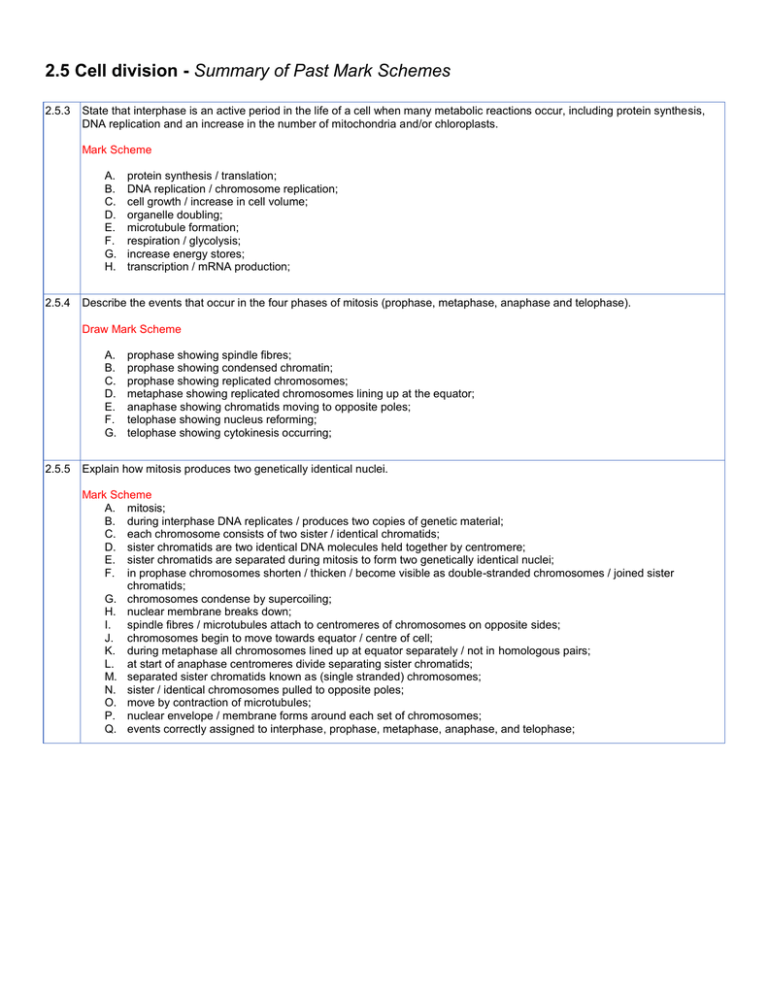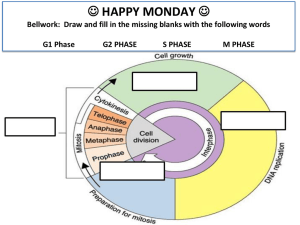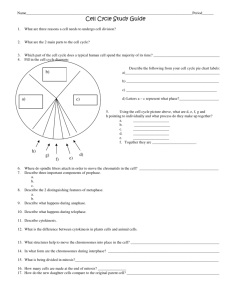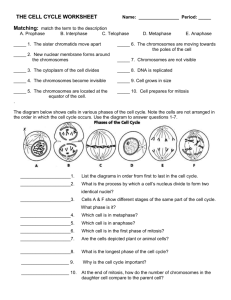2.5 Cell division -
advertisement

2.5 Cell division - Summary of Past Mark Schemes 2.5.3 State that interphase is an active period in the life of a cell when many metabolic reactions occur, including protein synthesis, DNA replication and an increase in the number of mitochondria and/or chloroplasts. Mark Scheme A. B. C. D. E. F. G. H. 2.5.4 protein synthesis / translation; DNA replication / chromosome replication; cell growth / increase in cell volume; organelle doubling; microtubule formation; respiration / glycolysis; increase energy stores; transcription / mRNA production; Describe the events that occur in the four phases of mitosis (prophase, metaphase, anaphase and telophase). Draw Mark Scheme A. B. C. D. E. F. G. 2.5.5 prophase showing spindle fibres; prophase showing condensed chromatin; prophase showing replicated chromosomes; metaphase showing replicated chromosomes lining up at the equator; anaphase showing chromatids moving to opposite poles; telophase showing nucleus reforming; telophase showing cytokinesis occurring; Explain how mitosis produces two genetically identical nuclei. Mark Scheme A. mitosis; B. during interphase DNA replicates / produces two copies of genetic material; C. each chromosome consists of two sister / identical chromatids; D. sister chromatids are two identical DNA molecules held together by centromere; E. sister chromatids are separated during mitosis to form two genetically identical nuclei; F. in prophase chromosomes shorten / thicken / become visible as double-stranded chromosomes / joined sister chromatids; G. chromosomes condense by supercoiling; H. nuclear membrane breaks down; I. spindle fibres / microtubules attach to centromeres of chromosomes on opposite sides; J. chromosomes begin to move towards equator / centre of cell; K. during metaphase all chromosomes lined up at equator separately / not in homologous pairs; L. at start of anaphase centromeres divide separating sister chromatids; M. separated sister chromatids known as (single stranded) chromosomes; N. sister / identical chromosomes pulled to opposite poles; O. move by contraction of microtubules; P. nuclear envelope / membrane forms around each set of chromosomes; Q. events correctly assigned to interphase, prophase, metaphase, anaphase, and telophase;









